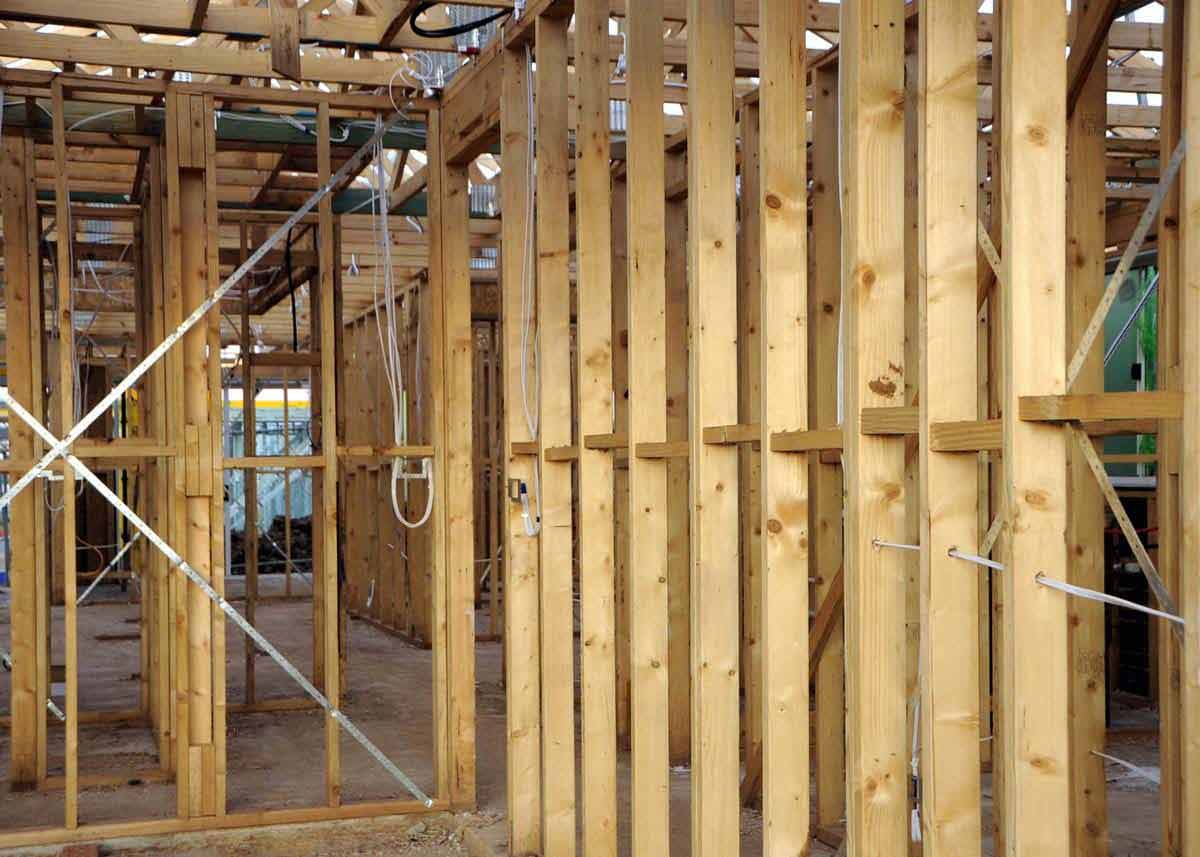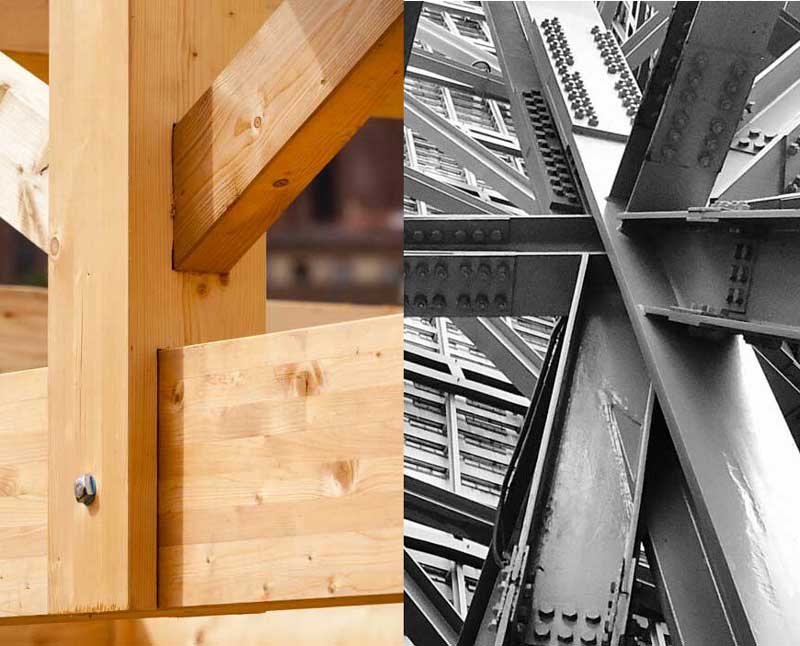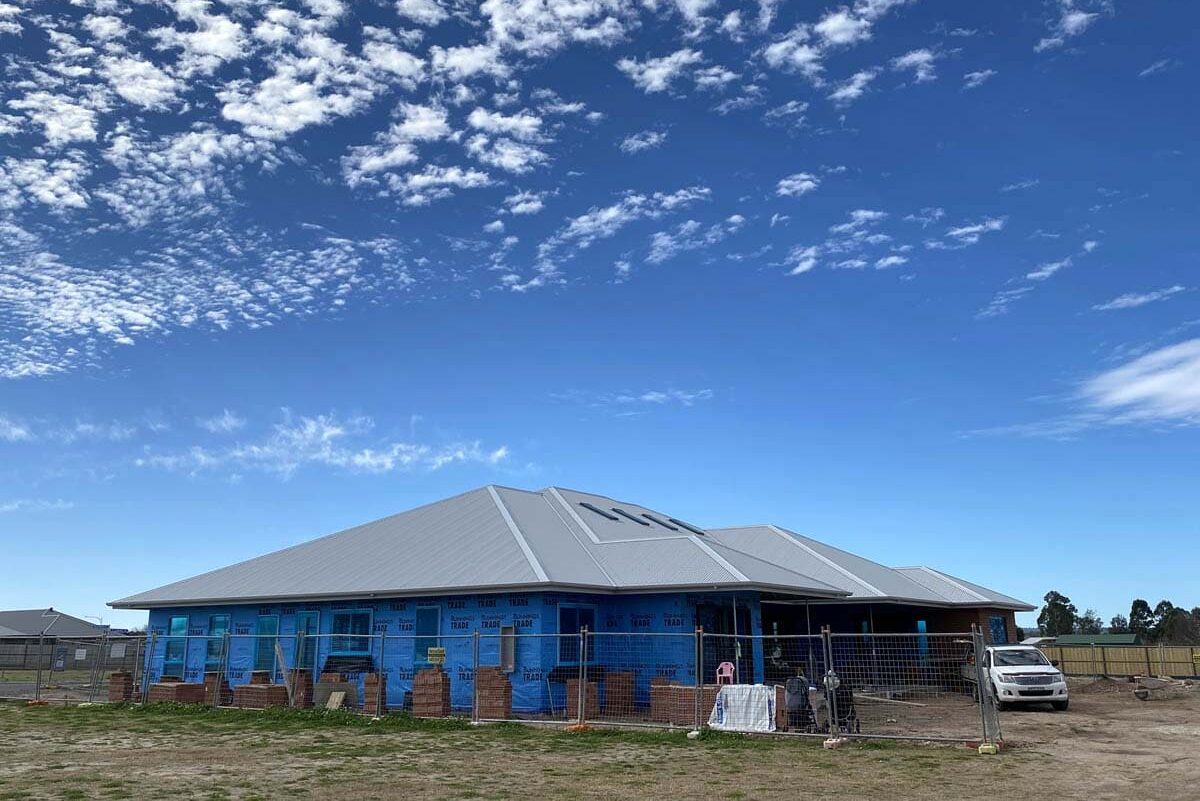We are often asked, is timber framing sustainable? Timber is fully sustainable, due to the fact that it grows naturally and is renewable. Timber is the obvious choice if you’re looking for sustainable frames for your home due to its impact on global warming, air and water pollution avoidance, resources usage and embodied energy as well as lifelong carbon storage. Timber has lower embodied emissions (emissions incurred for initial construction of building) than any other construction material.
When looking for timber frames for sustainable homes, it’s not only important to look at the materials – but also the manufacturing, construction and even demolition processes.
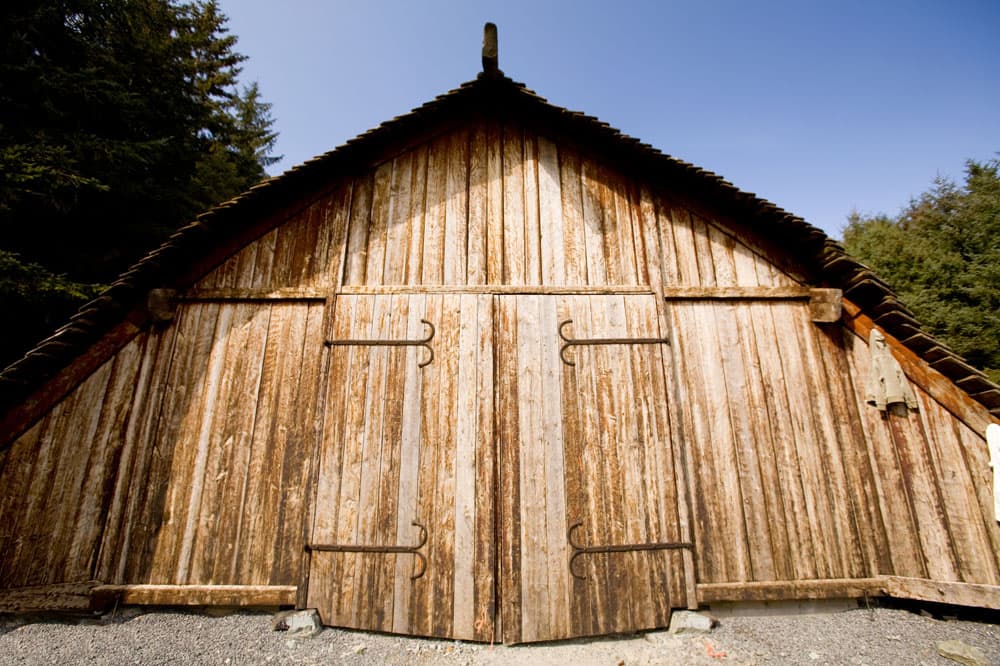

Here at Trueform Trusses and Frames, providing timber frames for sustainable homes is important to us. We are committed to using sustainably grown plantation timber. As such, we are endorsed by both the Programme for the Endorsement of Forest Certification (PEFC) and the Forest Stewardship Council.
The FSC is focused on ensuring the environmental sustainability and health of the Australian timber industry. We’re proud to be part of such an important initiative. Read here to learn more about everything that’s happening today, to ensure a healthy environment for the generations to come. If you’re still wondering, is timber framing sustainable?, then read on. We’ve put together a list of all the reasons timber is the best choice for sustainable homes.
Contact Us to discuss your timber framing needs
Why is timber framing a sustainable solution?
Ethically, sustainably sourced
All our products are sourced from environmentally friendly plantation pine, making them a fantastic timber option for sustainable homes. Australian industry regulations ensure that the majority of timber utilised in construction and framing is ethically and sustainably sourced.
As an example, our Richmond timber frames are made from renewable radiata pine. This timber is especially good for sustainable homes because it doesn’t conduct heat, unlike steel frames and trusses which can pose a safety hazard.
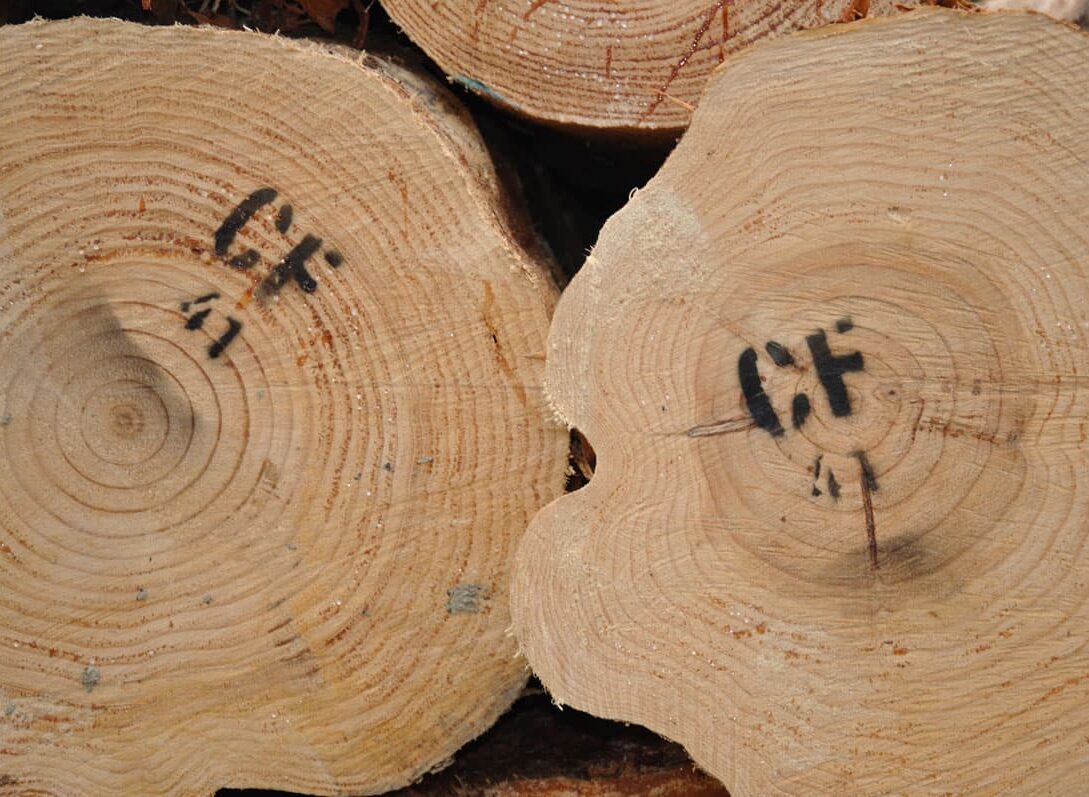
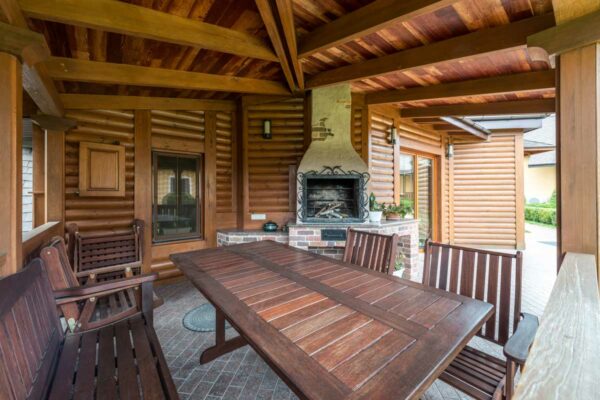
Extended lifespan
Timber frames are well known for their long lifespan, which makes timber the best choice for sustainable homes. As is demonstrated by the centuries old timber framed buildings standing strong, all around the world, timber is a long-lasting, reliable building material. And now that we have technological advancements in humidity and insect control, timber is an even more sustainable option for homes. A simple, annual check of your frame, looking for any pest or insect activity as well as signs of moisture will help extend the lifespan of your timber frame. The installation of dehumidifiers, humidifiers and ventilators will also help keep an optimal environment of 30-50% humidity.
Reducing carbon emissions
One of the things we love about working with timber is that half of its dry weight is carbon. This means that the carbon is safely stored, away from the environment. This is yet another benefit of utilising timber in sustainable homes.
An estimated 11% of global greenhouse gas emissions come from construction and building materials, and 28% is emitted from building operations.
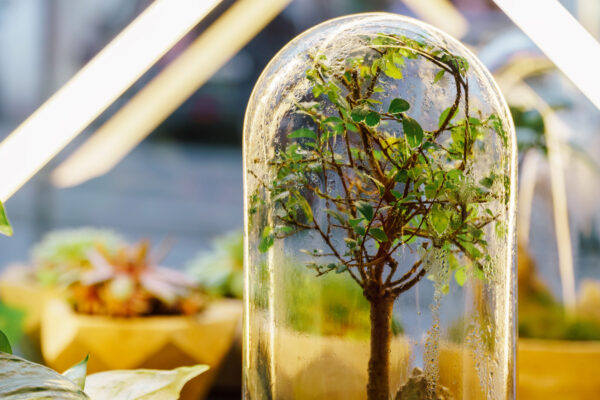
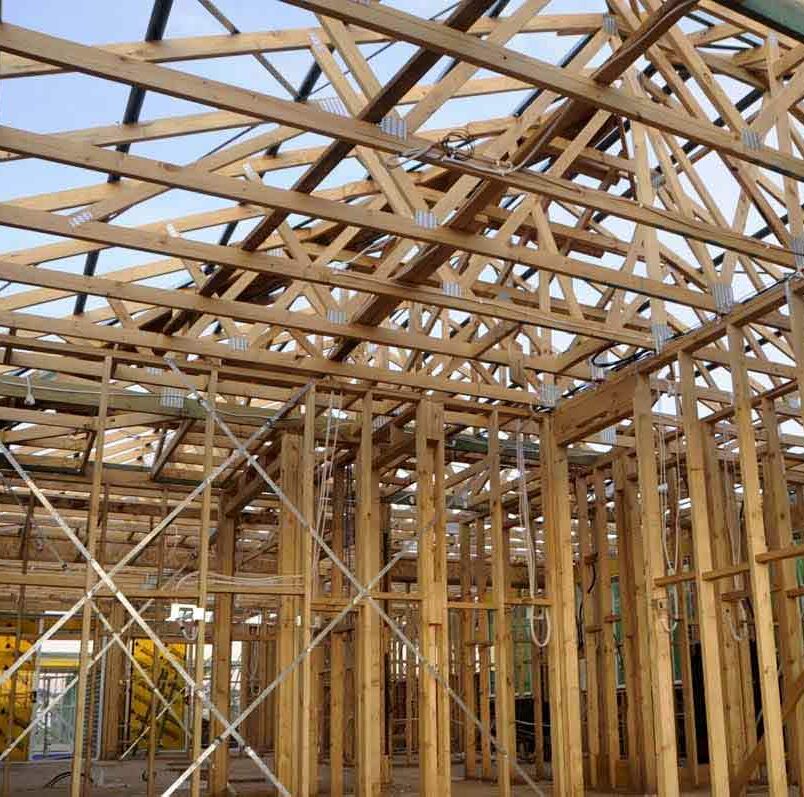
Even the timber framing production process is sustainable
Timber also has the lowest Embodied Energy Rating of all construction materials – which means it consumes the least amount of energy throughout the production process.
Timber production uses much less fossil fuel in the manufacturing process, so it has a significantly lower carbon footprint than steel, aluminium and concrete.
Faster construction time
Timber frames are fast to construct, cutting down on labor and wastage. Is timber framing sustainable? At every stage of the process, from production to installation, the answer is yes! Timber framing is the perfect sustainable choice for homes.
Energy efficiency
Timber frames are a sustainable choice for homes because they are great insulators, helping keep a home cool in the summer and warm in the winter. As it isn’t a heat conductor, timber has a low R-Value (thermal resistance rating). This has been measured to be a decrease of between 0.75 and 1tonne of CO2 (Source: Using Wood Products to Mitigate Climate Changes).
Additionally, when timber frames are constructed, the inclusion of Structural Insulated Panels and vented roof systems provides additional savings and sustainability.
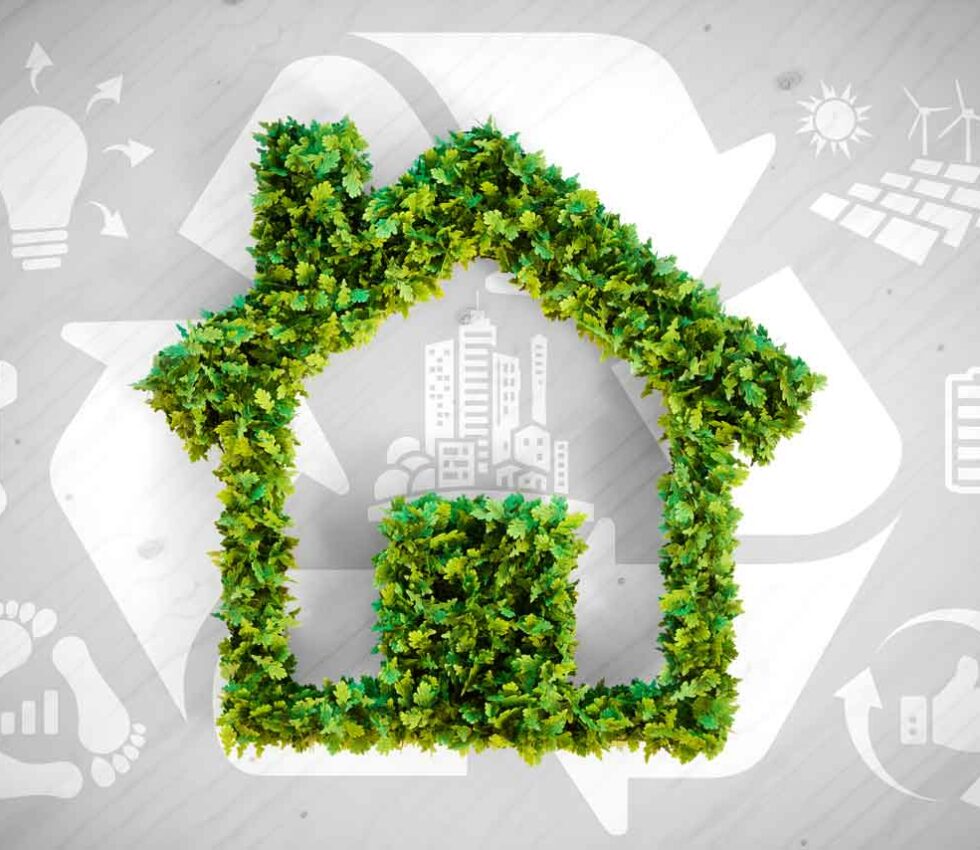
No wastage
Timber frames are great for sustainable homes as they leave little to no wastage in the manufacturing state, because wood offcuts are reused in a variety of ways.
Sustainability is a top priority to us and we’re proud to provide timber frames and trusses of the highest quality and environmental standards.
Contact us to discuss your timber framing needs

